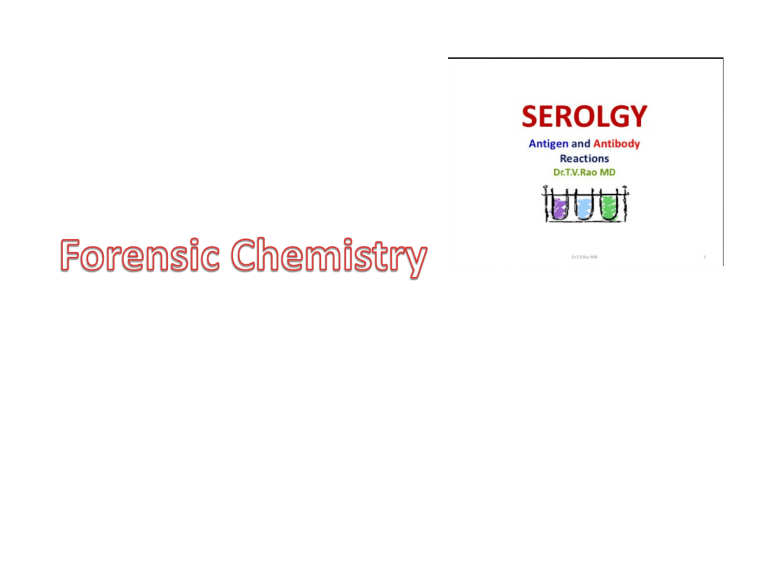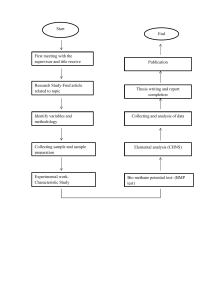Forensic Serology: Blood Analysis in Criminal Investigations
advertisement

Forensic Serology Serology- is the term used to describe a broad scope of laboratory tests which used to specific antigen and serum antibody reactions. -the term usually refers to the diagnostic identification of antibodies in serum. Blood • Is been called the circulating tissue of the body • Referred to as highly complex mixture of cells, enzymes proteins and inorganic substances. • It is opaque. Composition Of Blood 1. 45% Formed elements or Solid materials consisting chiefly of cells Erythrocytes(RBC)- contains haemoglobin and carry oxygen to the various cells in the body. Leukocytes(WBC)- are masses of nucleated protoplasm. It defends the body from invading microorganisms. It helps fight infection. Thrombocytes (BP)- cells that are produce by a bone marrow and are necessary for proper clotting of blood. 2. 55% Plasma- the fluid portion of the blood where the cells are suspended. It is principally composed of: a. Water 90% b. Solid(solutes) 10% Albumen - The most abundant protein in the blood. Globulins- has an important role in the immune mechanism of the body. It carries drugs as well as sex and thyroid hormones, lipids and iron. Fibrinogen-the soluble precursor of fibrin, which forms blood clot. Plasma-the yellowish fluids of the blood in which numerous blood corpuscles are suspended. A straw yellow liquid formed when blood to which an oxalate has been added to prevent clotting is allowed to stand. Serum- a straw yellow liquid formed when clotted is allowed to stand for sometime and blood contracts. Blood fibrin Blood serum Importance of the Study of Blood As circumstantial or corroborative evidence against or in favour to the perpetrator. As evidence in cases of disputed parentage. As an evidence in determination of the causes of death and the length if victim survived the attack. As an evidence in the determination of the direction of the case of victim or the assailant. As evidence in the determination of the origin of the flow of the blood. As an evidence in the determination of the approximate time the crime was committed. Problems in the study of Blood 1. Where blood has to be searched? 2. Collection, preservation, packing and transportation of specimen suspected to contain blood. 3. Does the stain contain blood or another substance? BLOOD CHARACTERIZATION Spot test- test for presence of blood. a. Benzidine test- presumptive test for the presence of blood. b. Kastle Meyer test- using phenolphthalien and hydrogen peroxide forming pink discoloration due to the presence of peroxidase (enzyme) activity of the blood haemoglobin. c. Luminol Test- a spray reagent used to test for the presence of blood even if it is not visible under ordinary light. This is viewed using UV lamp. d. Takayama test e. Teichmann Test Is the blood originated from a man or an animal?? Test used for determination 1. precipitin Test- antigen and antibody reaction forming precipitate. 2. gel diffusion – using agar test for human blood. 3. Electrophoresis The chronological test for Blood 1. Preliminary test- 2. Confirmatory test 3. Precipitin test 4. Blood grouping test GATHERING AND SAFEKEEPING OF EVIDENCE




